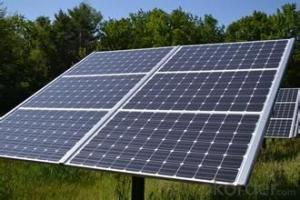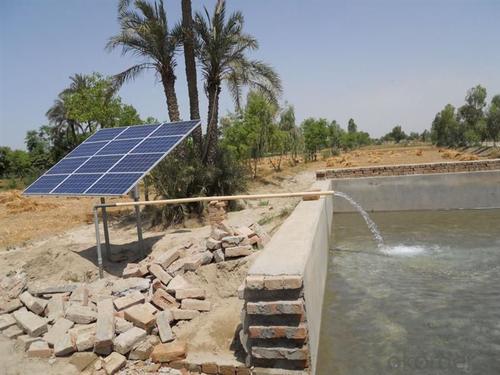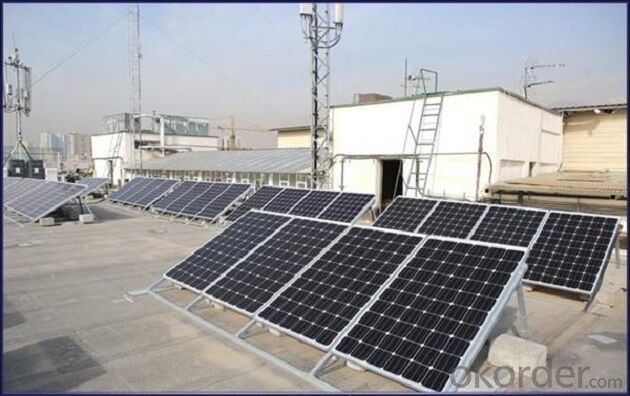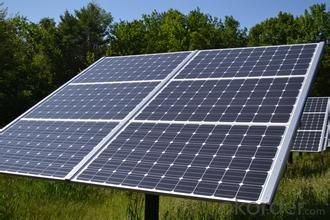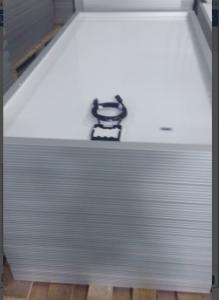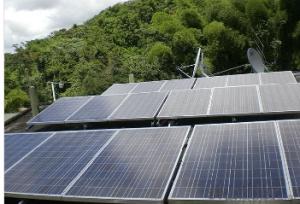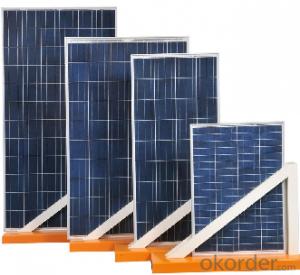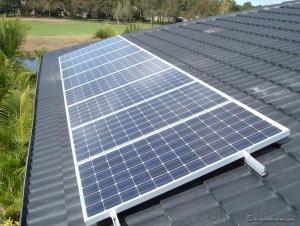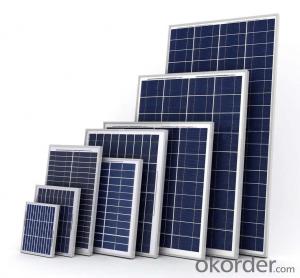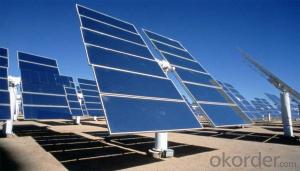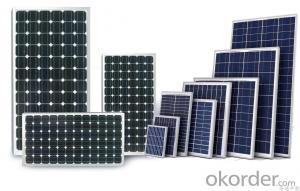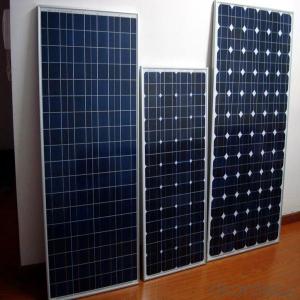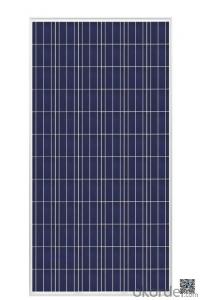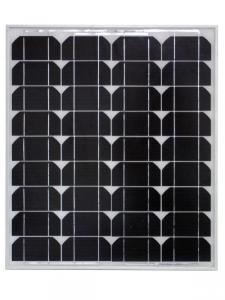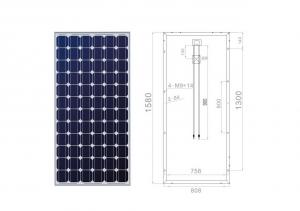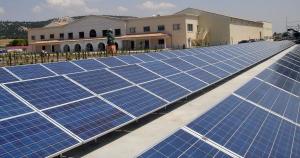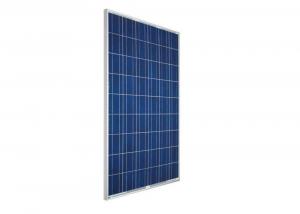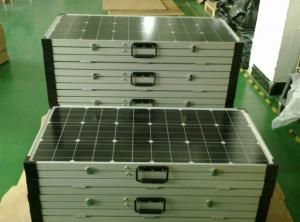XL Solar Panels 265W High Efficiency Poly PV Solar Panels
- Loading Port:
- China main port
- Payment Terms:
- TT OR LC
- Min Order Qty:
- 250 watt
- Supply Capability:
- 2500000 watt/month
OKorder Service Pledge
OKorder Financial Service
You Might Also Like
1.Product Description
We Offer the mono solar panels 250W, 255W, 260W 300W, poly solar panels 250W 260W 300W. You can find different mono solar panels and poly solar panels . We are the professional solar panels solar modules supplier.
Solar panels or modules use light energy (photons) from the sun to generate electricity through the photovoltaic effect. The majority of solar panels or modules use wafer-based crystalline silicon cells or thin-film cells based on cadmium telluride or silicon.
Solar panels constitute the solar array of a photovoltaic system that generates and supplies solar electricity in commercial and residential applications. Each solar panel or module is rated by its DC output power under standard test conditions, and typically ranges from 100w to 320 watts. Ground mounted photovoltaic system are usually large, utility-scale solar power plants. Their solar panels or modules are held in place by racks or frames that are attached to ground based mounting supports.
2.Technical Parameter
Model Type | |
Peak Power-Pmax(W) | 185 |
Open Circuit Voltage-Voc(V) | 44.2 |
Maximum Power Voltage-Vmp(V) | 36 |
Short Circuit Current-Isc(A) | 5.4 |
Maximum Power Current-Imp(A) | 5 |
Maximum System Voltage | 1000V DC |
Maximum Series Fuse Rating | 10A |
Power Tolerance | -1~+3% |
Temperature Coefficients of Pmax | -0.45%/℃ |
Temperature Coefficients of Voc | -0.348%/℃ |
Temperature Coefficients of Isc | 0.031%/℃ |
Nominal Operating Cell Temperature | 44.5±2℃ |
Standard Testing Condition(STC) | Irradiance:1000W/m²;Temperature:25℃;AM=1.5 |
Qualification Test Parameters | |
Operating Temperature | -40℃~+85℃ |
Storage Temperature | -40℃~+85℃ |
Pressure Bearing | ≥5400Pascal/m² |
Wind Bearing | ≥5400Pascal/m² |
Mechanical Characteristics | |
Cell Size | Mono 125*125mm±0.5 |
No.of Cells | 72pcs(6*12) |
Dimension | 1580*808*40mm |
Weight | 15.5Kg |
Glass | 3.2mm High Transmission,Low Iron |
Frame | Anodized Aluminum Alloy |
Junction Box | IP65Rated |
Internal Diodes | 3 Bypass Diodes |
Cable | 1*4.0mm² Length 900mm |
3.Production Flow
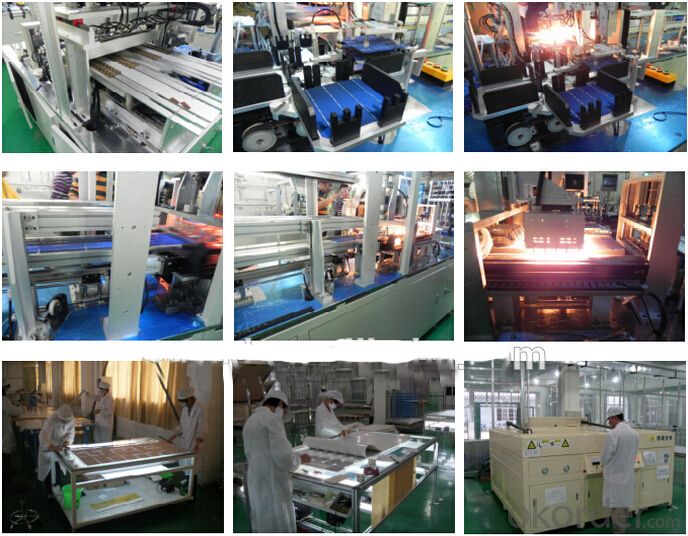
4. Use For
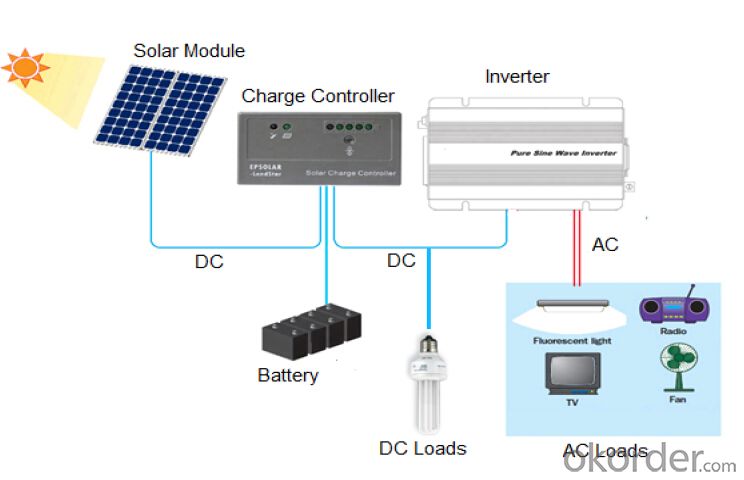
5. Pictures of Product
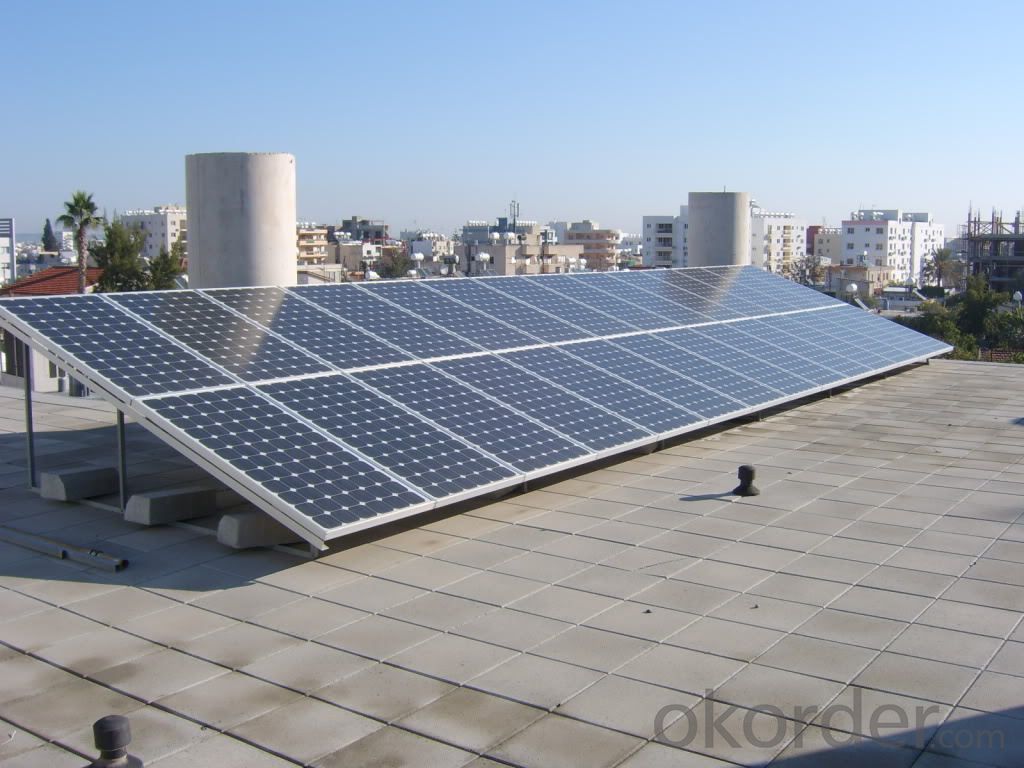
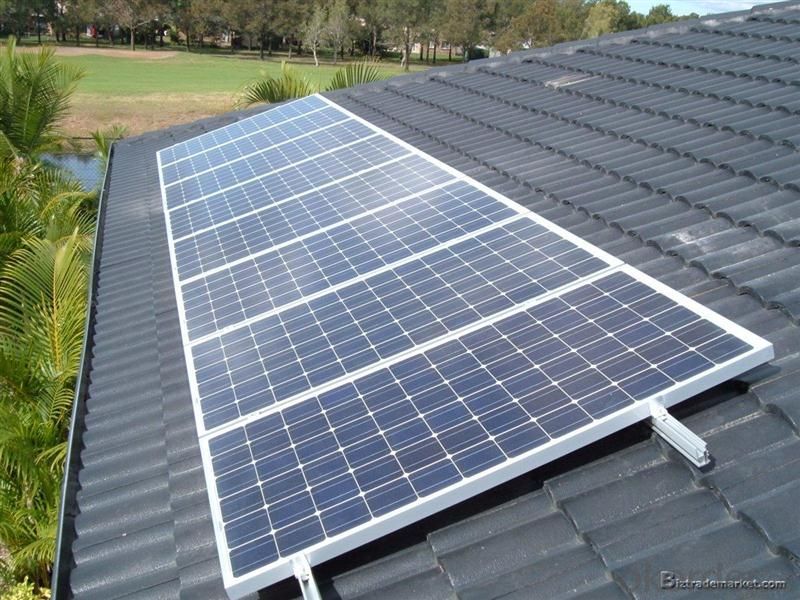
6.FAQ
We have organized several common questions for our clients,may help you sincerely:
1). What’s price per watt?
A: It’s depends on the quantity, delivery date and payment terms of the order. We can talk further about the detail price issue. Our products is high quality with lower price level.
2). Can you tell me the parameter of your solar panels?
We have different series of cells with different power output, both from c-si to a-si. Please take our specification sheet for your reference.
3). How do you pack your products?
We have rich experience on how to pack the panels to make sure the safety on shipment when it arrives at the destination.
4).Can you do OEM for us?
Yes, we can.
- Q: How do solar panels affect wildlife?
- Solar panels can have both positive and negative effects on wildlife. On the positive side, solar panels can provide a habitat for certain species, such as birds or insects, as they can create shaded areas or serve as perches. Additionally, solar farms often have vegetation underneath or around the panels, which can attract and support a diverse range of wildlife. However, there are also potential negative impacts to consider. Large-scale solar projects can disrupt or destroy natural habitats, leading to the displacement or loss of certain species. Additionally, solar panels can pose a risk to birds and other flying animals if they are not properly designed or installed. Glare from the panels may also impact wildlife behavior or migration patterns. Overall, it is important to carefully plan and manage solar installations to minimize any negative impacts on wildlife while maximizing the benefits they can provide.
- Q: Are solar panels durable?
- Yes, solar panels are durable. They are designed to withstand various weather conditions, including hail, snow, and strong winds. Additionally, most solar panels come with warranties that guarantee their performance for 25 to 30 years, indicating their long-lasting durability.
- Q: Pls is it ok to connect a 0watt and 20watt solar panel together into a charge controller port, can i just tie the wires together and run into the controller?? Will damage anything...Thanks guys
- Homemade okorder /
- Q: Can solar panels be used in areas with high levels of UV radiation?
- Yes, solar panels can be used in areas with high levels of UV radiation. In fact, solar panels are designed to withstand UV radiation as they are made with materials that can handle prolonged exposure to sunlight. However, it is important to note that high levels of UV radiation may slightly degrade the efficiency of solar panels over time. Nonetheless, solar panels are still an effective and sustainable energy solution in areas with high UV radiation.
- Q: What is the difference between Photovoltaic Panels and Solar Panels?
- Both of them are different types of solar panel. EDIT: Misspelling on Jeff's answer below! I think he means 'silicon,' not 'silicone!' Solar cells are typically grown on a glass substrate or put onto glass. Silicon is currently the most common material, followed by CdTe or cadmium telluride. Other materials like CIGS (Copper Indium Gallium (di)Selenide) are breaking into the market. Some people have great hopes for organic or 'dye' solar cells.
- Q: i want to join multiple solar panels into a bank so i only need one length of wire, i am going to use diodes to stop them sending power back into the one before it. is this ok or do i need something else?
- Check out some of the videos on YouTube on this subject.
- Q: solar panels are way too expensive to buy, can they be homemade cheaply? i want at least 500 watts. everyone on the web sells these instructions, but i'd like a link to free info, if it is really possible for a non-sciencey person to make. thank you
- If you want long term working ones then no. I have not seen the web instructions ones, but solar panels that are manufactured are a lot more complex then simple solar panels that you make in your backyard. Also, you need to have some type of turbine or other thing to change heat energy into electrical energy. For a non science person to try and do this and have it work the first time maybe hard to accomplish.
- Q: Can solar panels be installed on historical landmarks?
- Yes, solar panels can be installed on historical landmarks. However, it requires careful planning and consideration to ensure that the installation does not compromise the historical integrity of the landmark. This may involve using discreet mounting systems or integrating solar panels into existing structures. Additionally, obtaining the necessary permits and approvals from relevant authorities is crucial before proceeding with the installation.
- Q: what is solar panel? full description needed?
- Solar energy begins with the sun. Solar panels (also known as PV panels) are used to convert light from the sun, which is composed of particles of energy called photons, into electricity that can be used to power electrical loads. Solar panels can be used for a wide variety of applications including remote power systems for cabins, telecommunications equipment, remote sensing, and of course for the production of electricity by residential and commercial solar electric systems. On this page, we will discuss the history, technology, and benefits of solar panels. We will learn how solar panels work, how they are made, how they create electricity, and where you can buy solar panels.
- Q: I need a list of worldwide solar panel manufactures from china, US, Spain, Germany, Japan etc...Can any one direct ne to such place?I rather it will also contain comparison of parameters like efficiacy, quality etc and to be divedied by country of manufacturing.Thank you
- You can't buy at that level unless you are connected to governement. A lot of production is already spoken for for years to come. Where you live determines what you can legally buy and install. The EU has it's own certification, the US has 2 sets, the Canadians have their own. Your answer also requires knowing the use for the solar panels, whether it is grid-tie, off-grid or standalone to power an appliance. And you have to choose mono crystalline, poly crystalline, or thin-film.
Send your message to us
XL Solar Panels 265W High Efficiency Poly PV Solar Panels
- Loading Port:
- China main port
- Payment Terms:
- TT OR LC
- Min Order Qty:
- 250 watt
- Supply Capability:
- 2500000 watt/month
OKorder Service Pledge
OKorder Financial Service
Similar products
Hot products
Hot Searches
Related keywords


